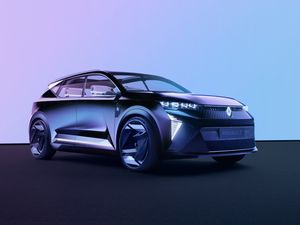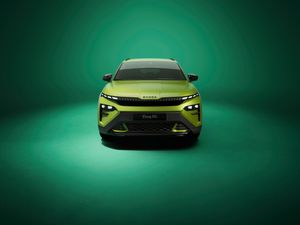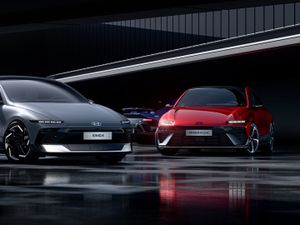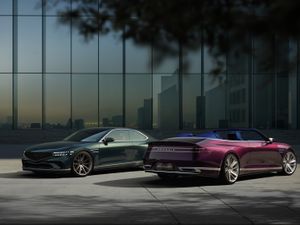Renault Scenic reborn as a hydrogen-electric hybrid concept car
It is said to have a carbon footprint that is 75 per cent less than a conventional electric car.

The Renault Scenic has been revived as a hydrogen-electric concept car, previewing an electric SUV that’s due in 2024.
The exterior of this show car is said to give a good idea of what to expect when the new model goes on sale, but everything else is designed to show off Renault’s vision for sustainable motoring in the future.
For example, while the production Scenic will run purely on electric power, this Scenic Vision concept has a unique hydrogen-electric hybrid powertrain.

It uses a 211bhp electric motor that has been derived from the one used in the Megane E-Tech Electric. It uses no rare-earth elements, reducing its carbon footprint, while the 40kWh battery is recyclable and said to be lighter, smaller and costs less than an equivalent EV’s battery.
On top of this is a 20bhp hydrogen fuel cell, which can recharge the battery during long drives and extend the car’s range – a full tank and a full battery should offer almost 500 miles of driving, with the tank able to be filled in five minutes.
Although currently just a concept, Renault says the Scenic Vision’s platform is currently in the prototyping phase, hinting that a purpose-built hydrogen vehicle could come from the French firm in the future.
Recent studies have shown that the larger an EV’s battery is, the worse its carbon footprint is. Therefore, the advantage of the hydrogen-electric system is that the Scenic Vision can have a smaller battery and be driven on electric-only for shorter trips, then use the hydrogen for longer trips.

The only emission from fuel cell vehicles is water, but the major downside currently is that the refuelling infrastructure is poor.
Renault Group is targeting carbon neutrality through its European operations by 2040, and worldwide by 2050. Part of achieving this is looking at how materials are sourced and what happens at the end of a vehicle’s life.
The Scenic Vision is made up of 70 per cent renewable and recycle materials, with 95 per cent said to be recyclable. For example, the steel, aluminium, carbon-fibre and plastics used on the exterior can all be recycled.
Meanwhile, the interior is made ‘responsibly’, with the foams, fabrics and stitching on the seats being made of the same materials to make them easier to recycle.





